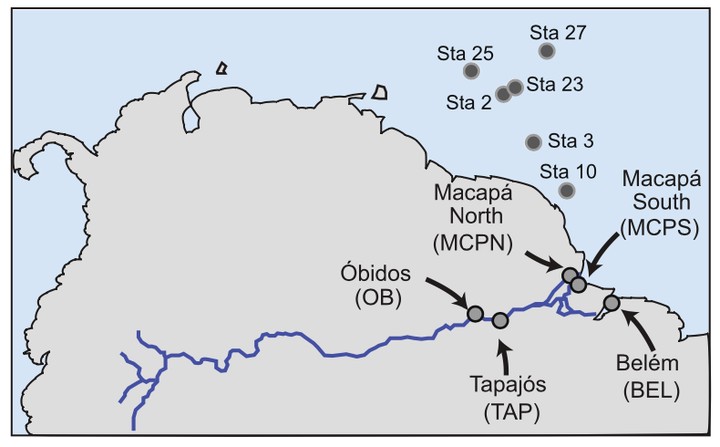Metagenomic and metatranscriptomic inventories of the Amazon River, May 2011

Abstract
The Amazon River runs nearly 6500 km across the South American continent before emptying into the western tropical North Atlantic Ocean. In terms of both volume and watershed area, it is the world’s largest riverine system, affecting elemental cycling on a global scale. A quantitative inventory of genes and transcripts benchmarked with internal standards was obtained at five stations in the lower Amazon River during May 2011. At each station, metagenomes and metatranscriptomes were obtained in duplicate for two microbial size fractions (free-living, 0.2 to 2.0 μm; particle-associated, 2.0 to 297 μm) using 150 × 150 paired-end Illumina sequencing. Forty eight sample datasets were obtained, averaging 15 × 106 potential protein-encoding reads each (730 × 106 total). Prokaryotic metagenomes and metatranscriptomes were dominated by members of the phyla Actinobacteria, Planctomycetes, Betaproteobacteria, Verrucomicrobia, Nitrospirae, and Acidobacteria. The actinobacterium SCGC AAA027-L06 reference genome recruited the greatest number of reads overall, with this single bin contributing an average of 50 billion genes and 500 million transcripts per liter of river water. Several dominant taxa were unevenly distributed between the free-living and particle-associated size fractions, such as a particle-associated bias for reads binning to planctomycete Schlesneria paludicola and a free-living bias for actinobacterium SCGC AAA027-L06. Gene expression ratios (transcripts to gene copy ratio) increased downstream from Óbidos to Macapá and Belém, indicating higher per cell activity of Amazon River bacteria and archaea as river water approached the ocean. This inventory of riverine microbial genes and transcripts, benchmarked with internal standards for full quantitation, provides an unparalleled window into microbial taxa and functions in the globally important Amazon River ecosystem.